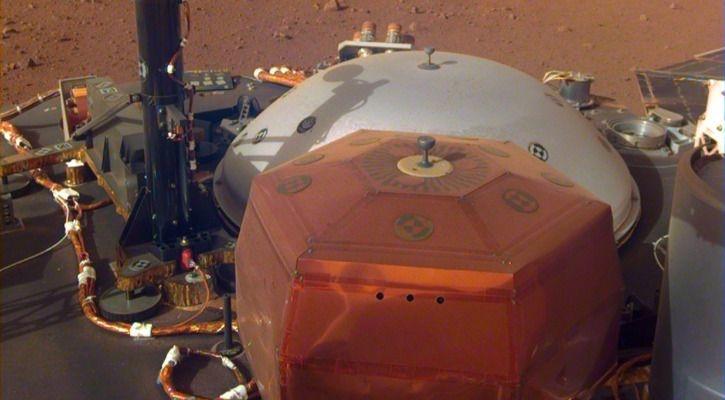This Is What Wind On Mars Sounds Like, NASA Captured It For You
Dhir Acharya - Dec 10, 2018

Get ready for the very first sound recorded on Mars.
- Believe It Or Not, Dirt From Mars Can Be Bought With Only $20 A Kilogram
- Russia Will Build A Lunar Space Station With China Because It's Done With NASA
- NASA Reveals 20 Most Stunning Earth Images Taken From The ISS
Last week, the InSight Mars Lander successfully landed in the Elysium Planitia area, on the Red Planet. Now, InSight is slowly trying to make its way through the planet’s surface.
But before it succeeds in the next step, InSight has already captured something awesome, the sound of wind on Mars.

In fact, NASA’s InSight was not designed to record sounds, or at least, not directly. Nevertheless, one of the InSight’s missions is to research what’s inside the planet’s crust. Therefore, the machine has landed on Mars with a thermometer, echo sensors, a seismometer, etc.
What you’re about to hear, what the InSight has captured on Mars is the sound of the wind when the machine moves the dome where the air pressure sensor is attached. After NASA calibrated the sensor, the space agency was capable of recording the sound that is as authentic as possible.

During a press release, Tom Pike, a scientist from the InSight team, mentioned the role of InSight as “a giant ear.” According to Pike, the solar panels which are attached to the two opposite sides of the rover respond to the fluctuations of the wind pressure.
Serve yourself, listen here to the wind on Mars.
It seems like the sound of regular wind that we can hear anywhere on Earth, but remember that this sound actually comes from another planet, millions of miles away from where you are.
NASA’s InSight Mars lander was launched in May 2018. Carrying the rover into space was a United Launch Alliance Atlas V rocket. Sent to Mars, the InSight’s missions include identifying marsquakes as well as vibrations generated from micrometeorite strikes using a super sensitive seismometer. Also, the team makes use of the communication gear attached to the rover to accurately track its location on the planet’s surface and collect data to study the planet’s axis of rotation.
Featured Stories

Features - Jul 01, 2025
What Are The Fastest Passenger Vehicles Ever Created?

Features - Jun 25, 2025
Japan Hydrogen Breakthrough: Scientists Crack the Clean Energy Code with...

ICT News - Jun 25, 2025
AI Intimidation Tactics: CEOs Turn Flawed Technology Into Employee Fear Machine

Review - Jun 25, 2025
Windows 11 Problems: Is Microsoft's "Best" OS Actually Getting Worse?

Features - Jun 22, 2025
Telegram Founder Pavel Durov Plans to Split $14 Billion Fortune Among 106 Children

ICT News - Jun 22, 2025
Neuralink Telepathy Chip Enables Quadriplegic Rob Greiner to Control Games with...

Features - Jun 21, 2025
This Over $100 Bottle Has Nothing But Fresh Air Inside

Features - Jun 18, 2025
Best Mobile VPN Apps for Gaming 2025: Complete Guide

Features - Jun 18, 2025
A Math Formula Tells Us How Long Everything Will Live

Features - Jun 16, 2025
Comments
Sort by Newest | Popular